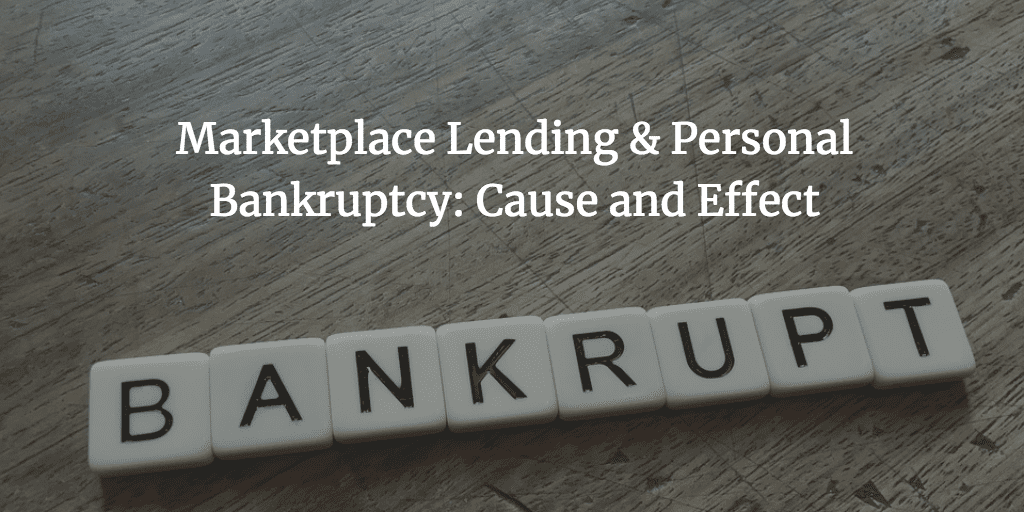
Perhaps it’s true that money can’t guarantee a lifetime of happiness, but one thing that is fairly certain, personal bankruptcy can guarantee a slew of negative emotions including sadness, grief and shame.
A national wave of personal bankruptcies that began in 2008 reached a peak in the year ending September 2010, when nearly 1.6 million bankruptcies were filed. So traumatic was the emotional impact of all these bankruptcies an entirely new field emerged – financial therapy – to provide counseling to people in need of emotional support due to a monetary crisis.
While the numbers have dropped significantly since the 2010 peak, personal bankruptcy is still a significant issue in the U.S. Filings fell by 1.8 percent for the 12-month period ending March 31, 2018, compared with the year ending March 31, 2017. The data continues a national trend of declining bankruptcy filings since 2010-2011. The March 2018 annual bankruptcy filings totaled 779,828, compared with 794,492 cases in the previous year, according to statistics released by the Administrative Office of the U.S. Courts.
However, the numbers are still substantial and the rate of people 65 and older filing for bankruptcy has tripled according to a recent study from the Consumer Bankruptcy Project. According to the study, the median wealth for over 65 bankruptcy filers is -$17,390. Non-bankrupt Americans of the same age recorded a median wealth of more than $250,000.
Fintech: A Way Out or Gateway to Deeper Debt?
An interesting white paper (The Real Effects of Financial Technology: Marketplace Lending and Personal Bankruptcy) co-authored by Dr. Piotr Danisewicz, University of Bristol and Ilaf Elard, Assistant Professor of Finance at Shanghai University of International Business and Economics was released last summer. It examines how today’s financial technology is affecting household hardship when it comes to personal bankruptcy.
The paper explores how the advancements in fintech are making it much easier to control finances and provide more access to funding, but also suggests that little is known about the risks vs benefits regarding the long-term effects on household financial health. The main question the white paper examines: is the increasing availability of credit pushing individuals to over-indebtedness, default and bankruptcy?
Citing a number of landmark court cases, the co-authors explore both the risks and benefits of fintech lending, claiming, “To the extent that individuals prefer to avoid bankruptcy, rather than default strategically to discharge debt, marketplace lending has the potential to lower debt refinancing costs and provide households with liquidity in the face of income or expenses shocks, thus reducing the incidence of bankruptcy.”
However, Danisewicz and Elard also suggest that the rapid expansion of marketplace credit could increase the number of bankruptcy cases by increasing consumer debt.
“Besides marketplace lending possibly throwing borrowers into a debt-trap of over-borrowing, the concern is that marketplace loans worsen the risk-composition of borrowers by providing credit to less creditworthy households,” the co-authors point out.
The Madden/Midland Effect
Perhaps the case that has garnered the most attention regarding the yin and yang of the fintech lending world, and the case Danisewicz and Elard spend the most time on in their research, is Madden vs Midland Funding LLC. We have covered this ruling extensively on Lend Academy – see articles here, here and here.
The white paper documents a persistent rise in personal bankruptcies following the Madden ruling and a severe decline in marketplace lending, particularly among low-income households. Danisewicz and Elard also document that marketplace loan defaults and consumer credit by banks and finance companies have remained unaffected, suggesting that increases in personal bankruptcy arise principally from reversing access to new lending technology.
Among the many additional conclusions Danisewicz and Elard reach in the white paper are:
- The Madden win triggered Lending Club and Prosper, the two largest U.S. marketplace lenders, to reduce lending in the states affected by the verdict.
- Using monthly data from the U.S. Courts Administrative Office, the paper cites that there are 8% more personal bankruptcy filings in Connecticut and New York relative to other states following Madden.
- The co-authors attribute the increase in the incidence of personal bankruptcy following Madden to the reduction in marketplace lending. This hypothesis is supported by a number of further results.
- The consequences of Madden are limited to the enforceability of marketplace loans and suggest that the increase in bankruptcy rates following Madden arises predominantly from changes in marketplace lending.
- Danisewicz and Elard also rule out that the rise in bankruptcy following the verdict could be the result of an increase in defaults by marketplace borrowers in the affected states. This may occur if marketplace borrowers are over-indebted and default after being unable to obtain additional marketplace loans in the affected states.
Danisewicz/Elard Conclusions
The research in the Danisewicz and Elard white paper suggest in the absence of a clear regulatory framework for fintech lending, the Madden vs Midland verdict also had the unintended consequence of raising personal bankruptcies.
As the co-authors conclude, “Understanding the real effects of financial technology helps to inform the intense regulatory deliberations on the wider fintech industry currently taking place at the OCC, FDIC, Federal Reserve, Treasury, and the Basel Committee on Banking Supervision.”
The Danisewicz/Elard research ultimately concludes that restricting marketplace lending increases personal bankruptcy filings persistently.
“Our findings have urgent policy implications,” the co-authors summarize. “While this paper does not imply that marketplace lending or the fintech industry is void of risks and should be left unregulated, our findings suggest that improving fintech lending regulations may improve access to marketplace funding and help alleviate financial hardship in terms of personal bankruptcy among low-income households.”
There has been bipartisan support in Congress for a Madden fix bill but as yet nothing has moved to a full vote. With a new Congress in place, we hope this legislation can be passed in 2019. As the white paper points out this will be a good thing for consumers.



